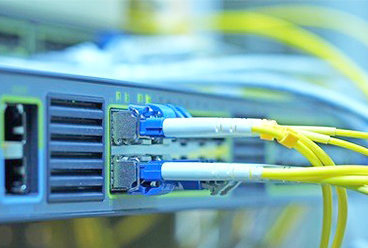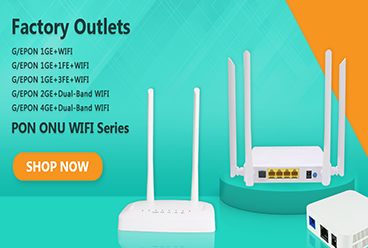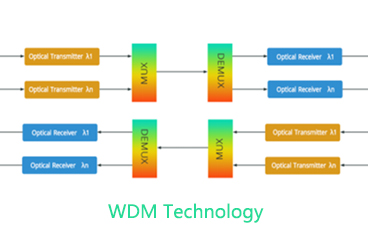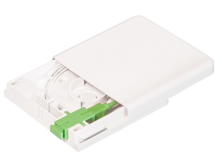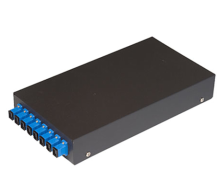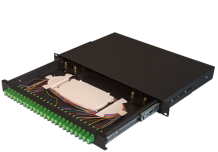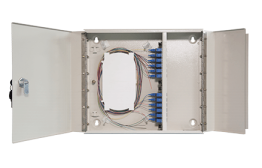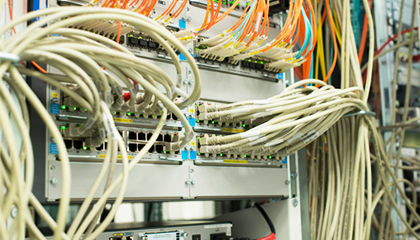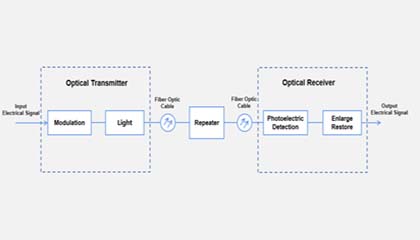In the communications industry, optical fiber terminal boxes are often indispensable equipment in our wiring process. Generally, we often use optical cables when we conduct network wiring outdoors, while the indoor network cables are twisted pairs, and the two cannot be directly connected. At this time, we need to use the optical fiber terminal box to branch the optical cable and connect it to the indoor circuit.
What is a fiber optic terminal box?
The optical fiber terminal box is a box that protects the fiber optic cable and the fiber pigtail welding at the terminal of the fiber optic cable. It is mainly used for the straight-through welding and branch splicing of the indoor and outdoor fiber optic cables and the fixing of the fiber optic cable terminal, which plays the role of fiber pigtail storage and protection of the joint. It can split an optical cable into a single optical fiber, which is equivalent to a connector, which plays the role of connecting the optical cable and the pigtail. After an optical cable arrives at the user end, it is fixed in the terminal box, and the core and pigtail in the optical cable are welded in the terminal box.
At present, optical fiber terminal boxes are widely used in wired telephone network systems, broadband network systems, cable television systems, etc., and are also used for direct and tapping of indoor optical fibers. They are made of cold-rolled steel plate and electrostatic sprayed. The design structure is reasonable and beautiful. Fix the fiber optic cable strength core to the terminal.
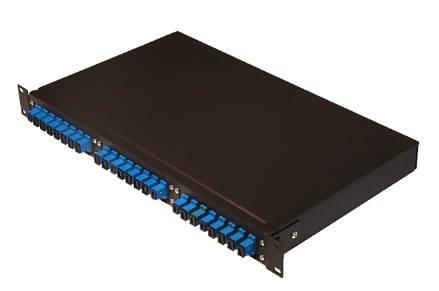
Several types of fiber optic terminal boxes
Optical fiber terminal boxes can be divided into different types according to different methods. For example, according to the optical cable connection method, they can be divided into straight-through and branched types. The straight-through terminal box has only one outer hole for connecting the receiving line, while the branched terminal box has several receiving The outer hole of the cable can be distinguished by seeing how many holes; according to the shell material, it can be divided into a metal shell optical fiber terminal box and a plastic shell optical fiber terminal box; according to the number of fusion fibers, it can be divided into 2 in, 8 out, and 4 in. 12 out, 4 in 24 out, etc.; according to the style, it can be divided into wall-mounted, rack-drawer, rack-mounted, desktop-type and other types. Different types of fiber optic terminal boxes are used in different fields and different demand situations, and you can choose according to your needs.
|
|
|
|
Function of fiber optic terminal box
1. The function of the optical fiber terminal box is to provide the fusion splicing of the optical fiber and the optical fiber, the fusion splicing of the optical fiber and the pigtail, and the handover of the optical connector. It also provides mechanical protection and environmental protection for the optical fiber and its components, and allows proper inspections to maintain the highest standards of optical fiber management. A good fiber optic terminal box needs to have the following functions:
2. Fixing function: After the optical cable enters the rack, its outer sheath and reinforcing core should be mechanically fixed, ground wire protection components should be installed, end protection processing, and optical fiber grouping and protection.
3. Splicing function: After the optical fiber drawn from the optical cable is spliced with the tail cable, the excess optical fiber is coiled and stored, and the spliced joint is protected.
4. Allocation function: plug the connector attached to the tail cable to the adapter, and realize the optical connection with the optical connector on the other side of the adapter. Adapters and connectors should be able to be flexibly inserted and removed; the optical path can be freely deployed and tested.
5. Storage function: Provide space for storage of various cross-connected optical cables between racks, so that they can be placed in a regular and orderly manner. There should be an appropriate space and method in the optical fiber terminal box to make the wiring of this part of the optical connection line clear, easy to adjust, and meet the minimum bending radius requirements.
Sopto provides various types of terminal boxes, with prices and quality ranging from 1 core to 96 cores. The terminal box is used to separate the optical fiber and store it in the optical cable. By using one of the panels, optical fibers can be spliced to a single optical fiber on other cables, allowing cables to be crossed and connected in various ways. In addition, the terminal box can create a safe environment and protect the exposed optical fibers in it. At the same time, Sopto's terminal box has the following characteristics:
1.Fully enclosed structure, good dustproof performance, moistureproof, beautiful appearance
2.Suitable for indoor wall installation and desktop installation
3.The anti-theft lock mechanism is adopted to effectively protect and manage the optical cable
5.Made of high-quality metal or plastic, standard size, light weight, easy to install
6.Overall processing of feeder and leather cable, optical fiber connection, fixation, storage, distribution, etc.
7.Suitable for FC, SC, LC, ST and other adapters, pigtails
Tags:fiber termina box,ftth box,fiber optic terminal box
— END —




